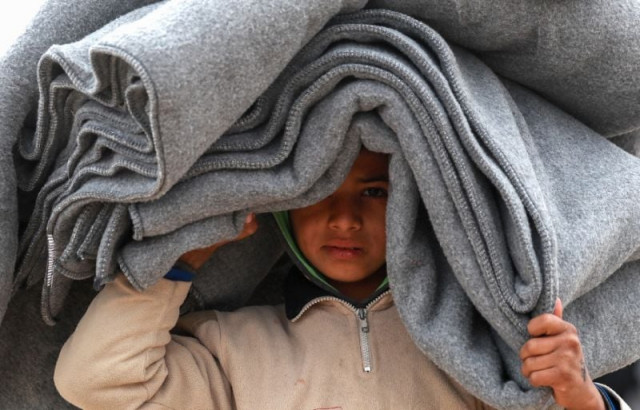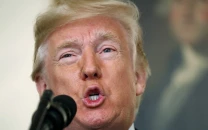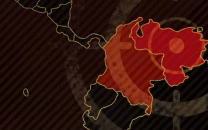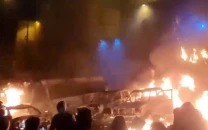Thousands flee bombs and hunger in eastern Syria
US-led coalition puts the number of militants fighters holding out in that area at around 2,000

His family was part of a group of around 200 civilians who managed to escape from a pocket of territory in Deir Ezzor province that is still held by the militants.
"I had to resist hunger, cold and rain," the newborn's mother Kamela Fadel tells AFP in a camp for displaced people in the northeastern region of Al-Hol.
The young woman, her husband and their four children now sleep under white tents, with hundreds of other people who fled eastern flashpoints in past weeks.
They are huddled on straw mats laid out directly on the gravelly earth, wrapped in blankets and hugging bags packed with their meagre belongings.
A nurse helps an elderly lady to the camp clinic as children play at scaling piles of foam mattresses and families sit cross-legged, eating from tin cans.
Turkey to launch operation against Syria Kurd militia within days
It is still cold in the vast tent but at least they are sheltered from the rain.
They walked for several days in the winter weather before being met last week by the Kurdish-led Syrian Democratic Forces (SDF) battling IS in Deir Ezzor.
"It was hunger that prompted us to leave, there was nothing left to eat," says Kamela's husband, still sporting the thick beard the militants impose on all adult men.
He and his family were living in Al-Shaafa, one of the last villages, together with Sousa and Hajin, that are still under the control of IS.
The SDF, with the support of air strikes by the US-led coalition against IS, launched a major operation against the last rump of the militants' moribund "caliphate" in September this year.
The militants hunkering down in their Euphrates Valley heartland have offered stiff resistance, thwarting coalition hopes of a quick victory.
Warplanes have been raining bombs on IS targets in and around Hajin, causing significant civilian loss of life in the process, according to the Syrian Observatory for Human Rights.
The Observatory says almost 320 civilians have been killed, including 113 children.
"There is destruction everywhere because of the fighting and the bombardment. We were scared for the children," says Faraj's father.
Local camp official Mohamed Ibrahim told AFP around 1,700 civilians had arrived in Al-Hol in recent days.
The intensity of the bombardment and the remoteness of the area make it is difficult to estimate the number of civilians who remain, voluntarily or not, in the IS pocket.
"In Syria, displacement leads to food insecurity as people leave their belongings behind," said Marwa Awad, a spokesperson for the UN's World Food Programme in Damascus.
US launches missiles at Assad's airbase in Syria
"This is why it's vital to maintain a lifeline of food assistance for vulnerable families such as those escaping violence in Deir Ezzor," she said.
Awad said at least 16,500 people had been forced to flee their homes in Hajin and surrounding areas since violence in the area intensified in July this year.
SDF fighters too suffered heavy losses in their assault on Hajin, where a group of die-hard militants with little to lose are making a bloody last stand.
"There are landmines everywhere on the roads," says Abu Omar, one of the displaced in Al-Hol.
Fearing retribution against relatives who have stayed behind in IS-controlled territory, he refused to give his full name.
"The village and our homes have been destroyed by the bombardment," says Abu Omar, a man in his thirties.
"There are still high-ranking members of IS and foreigners there, but most are on the Hajin frontline," he says. "They won't give up easily, they are fighting to the death."
The US-led coalition puts the number of militants fighters holding out in that area at around 2,000.
"The day we managed to flee, the fog was thick and gave us cover. Had they seen us, they would have wiped us out," says Ziba al-Ahmed, who escaped the town of Sousa.
"The bombardment was so scary and our bellies were crying," says the mother of four.
Their farming machinery was too precious to leave in Sousa and her husband stayed behind with one of their daughters.
"We're worried about them, we don't know what's going to happen to them."



















COMMENTS
Comments are moderated and generally will be posted if they are on-topic and not abusive.
For more information, please see our Comments FAQ